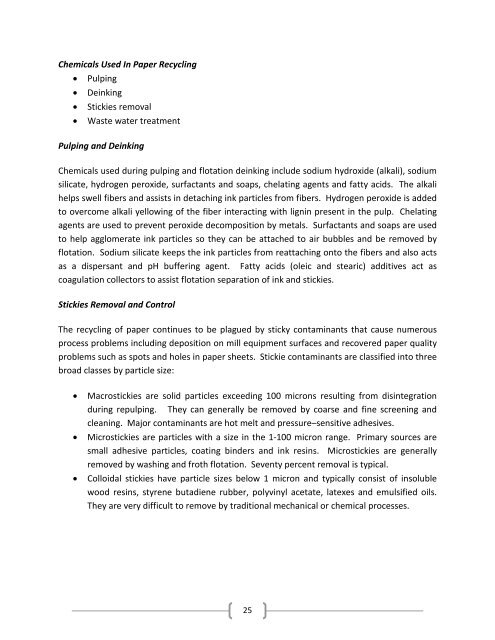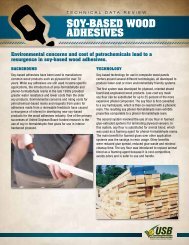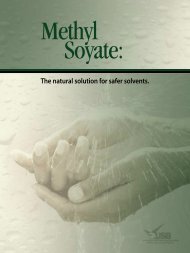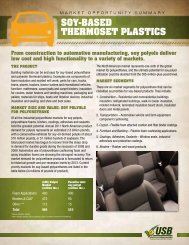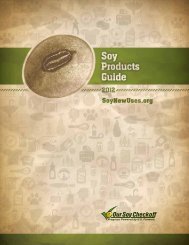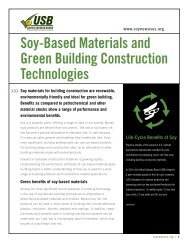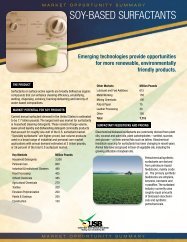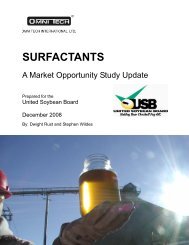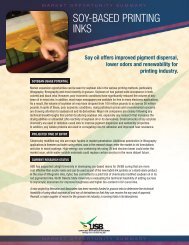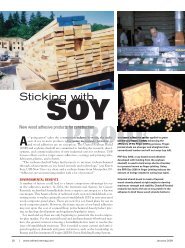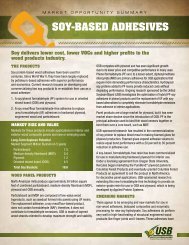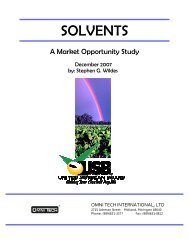SOY CHEMICALS FOR PAPER PROCESSING - Soy New Uses
SOY CHEMICALS FOR PAPER PROCESSING - Soy New Uses
SOY CHEMICALS FOR PAPER PROCESSING - Soy New Uses
You also want an ePaper? Increase the reach of your titles
YUMPU automatically turns print PDFs into web optimized ePapers that Google loves.
Chemicals Used In Paper Recycling• Pulping• Deinking• Stickies removal• Waste water treatmentPulping and DeinkingChemicals used during pulping and flotation deinking include sodium hydroxide (alkali), sodiumsilicate, hydrogen peroxide, surfactants and soaps, chelating agents and fatty acids. The alkalihelps swell fibers and assists in detaching ink particles from fibers. Hydrogen peroxide is addedto overcome alkali yellowing of the fiber interacting with lignin present in the pulp. Chelatingagents are used to prevent peroxide decomposition by metals. Surfactants and soaps are usedto help agglomerate ink particles so they can be attached to air bubbles and be removed byflotation. Sodium silicate keeps the ink particles from reattaching onto the fibers and also actsas a dispersant and pH buffering agent. Fatty acids (oleic and stearic) additives act ascoagulation collectors to assist flotation separation of ink and stickies.Stickies Removal and ControlThe recycling of paper continues to be plagued by sticky contaminants that cause numerousprocess problems including deposition on mill equipment surfaces and recovered paper qualityproblems such as spots and holes in paper sheets. Stickie contaminants are classified into threebroad classes by particle size:• Macrostickies are solid particles exceeding 100 microns resulting from disintegrationduring repulping. They can generally be removed by coarse and fine screening andcleaning. Major contaminants are hot melt and pressure–sensitive adhesives.• Microstickies are particles with a size in the 1-100 micron range. Primary sources aresmall adhesive particles, coating binders and ink resins. Microstickies are generallyremoved by washing and froth flotation. Seventy percent removal is typical.• Colloidal stickies have particle sizes below 1 micron and typically consist of insolublewood resins, styrene butadiene rubber, polyvinyl acetate, latexes and emulsified oils.They are very difficult to remove by traditional mechanical or chemical processes.25


